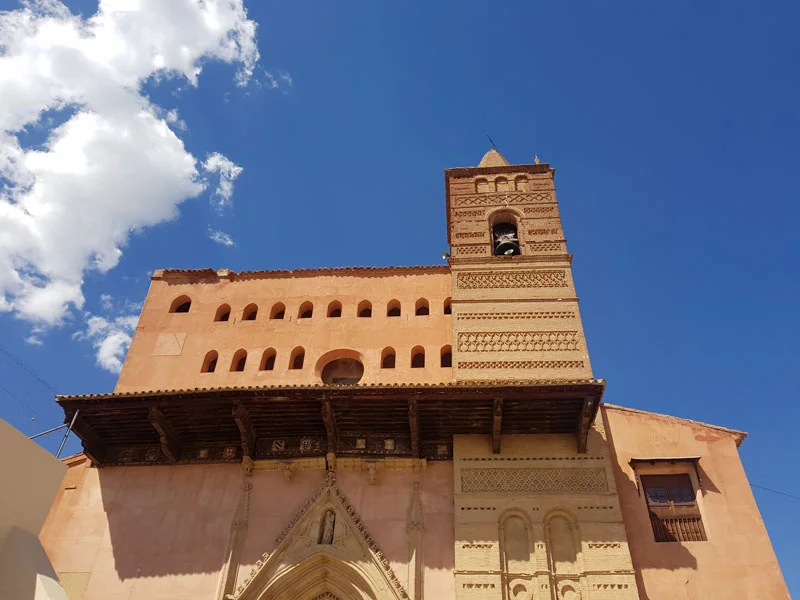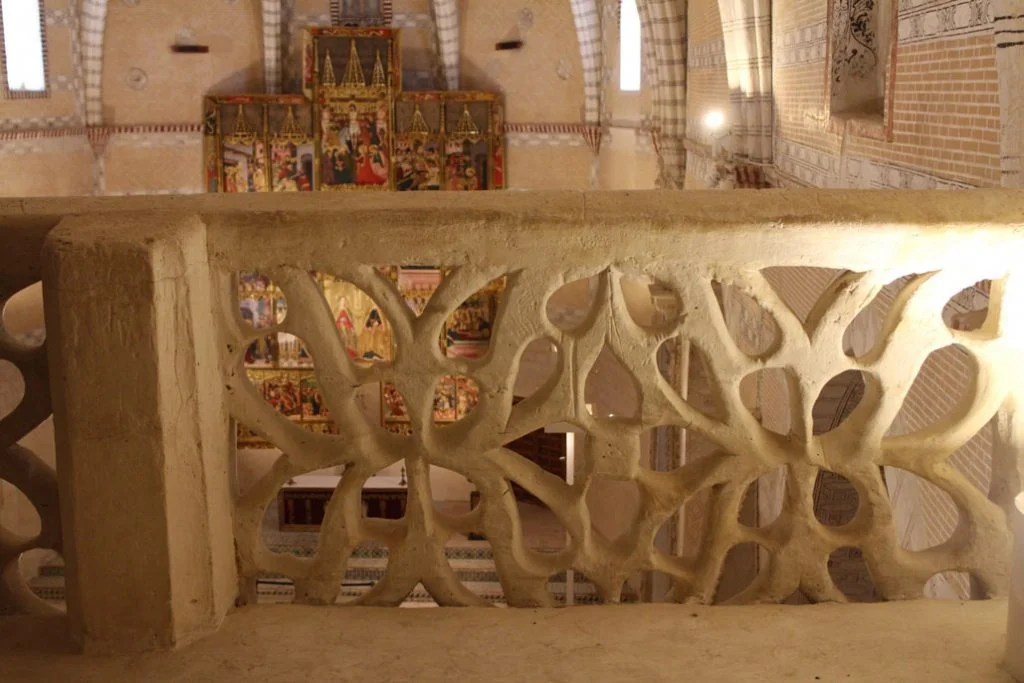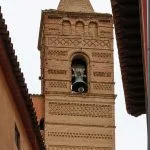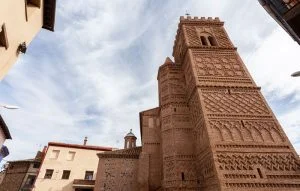

Monuments



Mudéjar wood in Maluenda

The character of Mudejar culture
Only the outer walls, the side chapels and the final two bays of the nave of the San Miguel church (14th c.) remain intact, in addition to a belfry and traces of a small tower. The Santa Maria church, constructed mainly of plaster mortar, is the oldest in Maluenda. The balcony with arched openings is particularly striking, as is the well-preserved condition of one of the most important Aragonese ceilings from that era, created by master builder Yusuf Adolmalih, and bearing his signature. The third Mudejar monument is the church of Santas Justa y Rufina. Completed in 1413, this fortified church skillfully combines its defensive and its religious functions, with an imposing exterior volume and an interesting corridor that runs around the interior over the side chapels.
Professor Gonzalo M. Borrás Gualis defined this town as one of the places in Aragon in which Mudejar architecture has left a powerful mark, with three Mudejar churches featuring the use of plaster mortar to finish the walls. In addition, a magnificent urban ensemble remains in existence, dotted with 15th century Mudejar houses, rendering the town undeniably attractive.
Only the outer walls, the side chapels and the final two bays of the nave of the San Miguel church (14th c.) remain intact, in addition to a belfry and traces of a small tower. The Santa Maria church, constructed mainly of plaster mortar, is the oldest in Maluenda. The balcony with arched openings is particularly striking, as is the well-preserved condition of one of the most important Aragonese ceilings from that era, created by master builder Yusuf Adolmalih, and bearing his signature. The third Mudejar monument is the church of Santas Justa y Rufina. Completed in 1413, this fortified church skillfully combines its defensive and its religious functions, with an imposing exterior volume and an interesting corridor that runs around the interior over the side chapels.
Christian tastes
This town is one of the most interesting examples of the Mudejar phenomenon to be found in Aragon, where the best examples of Mudejar religious architecture are seen in areas completely lacking in Mudejar population. This was the case in Ateca, Tobed and Cervera de la Cañada, for example.
With its trio of churches, Maluenda also shows that Mudejar art was prevalent at all levels of society, and fully accepted by medieval Aragonese society.
The town also boasts other striking features such as the 14th century arch that was locked with a gate and portcullis, forming part of the town’s defense mechanisms, the convent of the Carmelitas Descalzas, and the country chapels, including that of Santos Gervasio y Protasio, which affords excellent views of the Jiloca Valley.
Maluenda is a monumental city whose layout can be traced back to its Arab roots, extending under the protection of the 9th century rammed earth castle and its bastion tower, popularly known as El Palomar. The castle is of Islamic origin, although archeological ruins show evidence of a possible earlier Celtiberian settlement. The tower is contemporary to the castle, constructed by Muslim craftsmen.
This town is one of the most interesting examples of the Mudejar phenomenon to be found in Aragon, where the best examples of Mudejar religious architecture are seen in areas completely lacking in Mudejar population. This was the case in Ateca, Tobed and Cervera de la Cañada, for example.
With its trio of churches, Maluenda also shows that Mudejar art was prevalent at all levels of society, and fully accepted by medieval Aragonese society.
The town also boasts other striking features such as the 14th century arch that was locked with a gate and portcullis, forming part of the town’s defense mechanisms, the convent of the Carmelitas Descalzas, and the country chapels, including that of Santos Gervasio y Protasio, which affords excellent views of the Jiloca Valley.
Information
City council
www.maluenda.es
WOULD YOU LIKE TO LEARN MORE?
Zaragoza Tourism Office
www.turismodezaragoza.es
Centro de Estudios Bilbilitanos
cebilbilitanos.com
Asociación Torre Albarrana
torrealbarrana.com
Camino del Cid
www.caminodelcid.org
Territorio Mudéjar Network
The city council has been a founding member of Territorio Mudéjar since September 13, 2018. It serves as treasurer of the organization’s board of directors.
Mudejar Territory Projects in Maluenda
Monuments | See the project
Pedagogy | See the project
Mudetrad Project | See the project
Mudéjar wood | See the project
Maluenda in the social media
Facebook @ayuntamientomaluenda
@turismo.comunidadcalatayud
Intsagram:@aytomaluenda @comarcacalatayud












